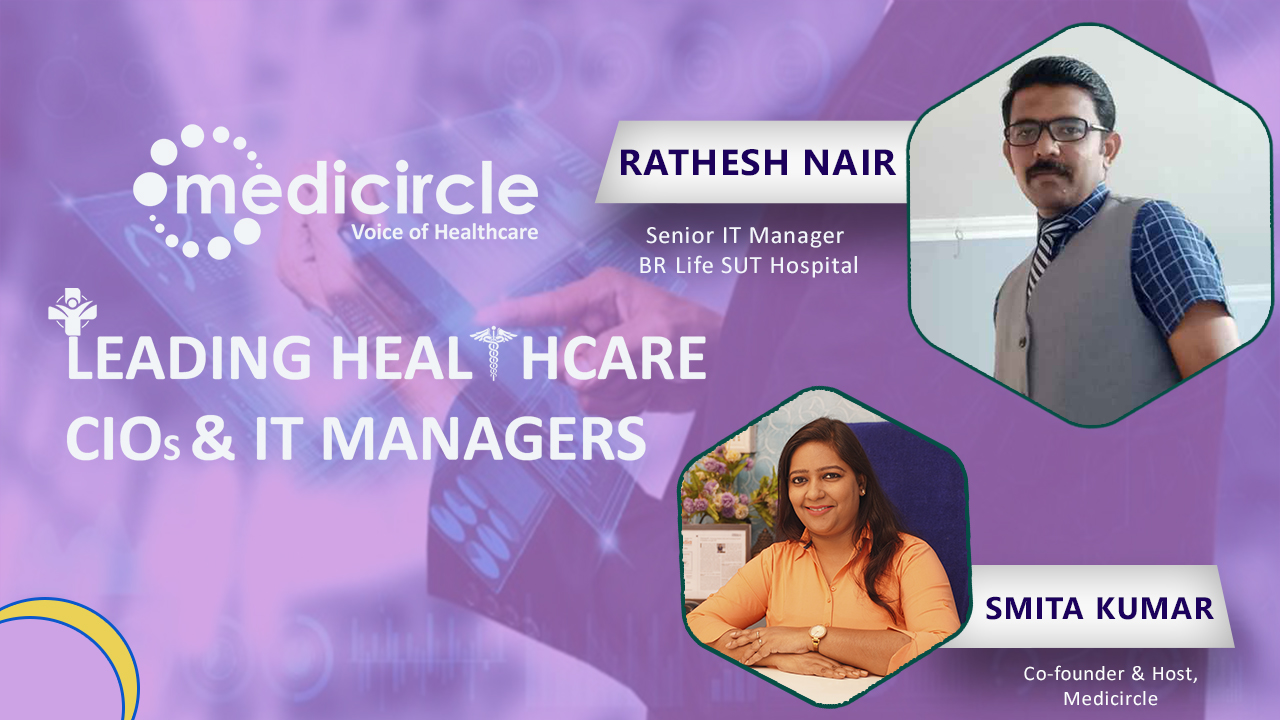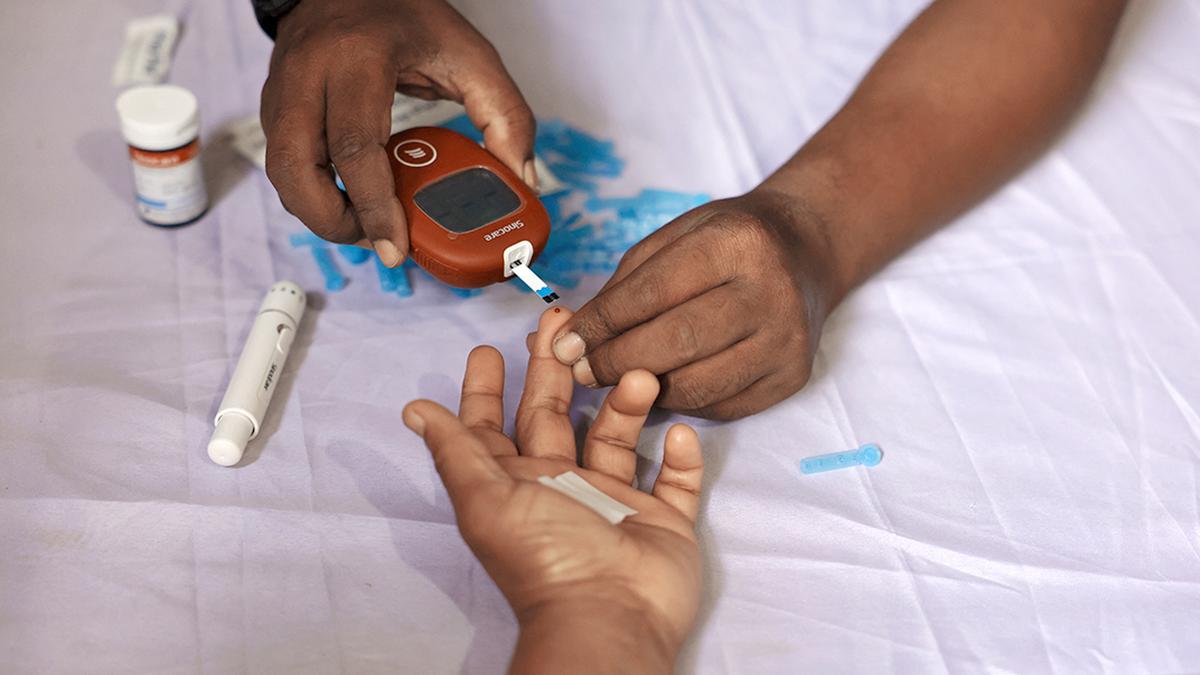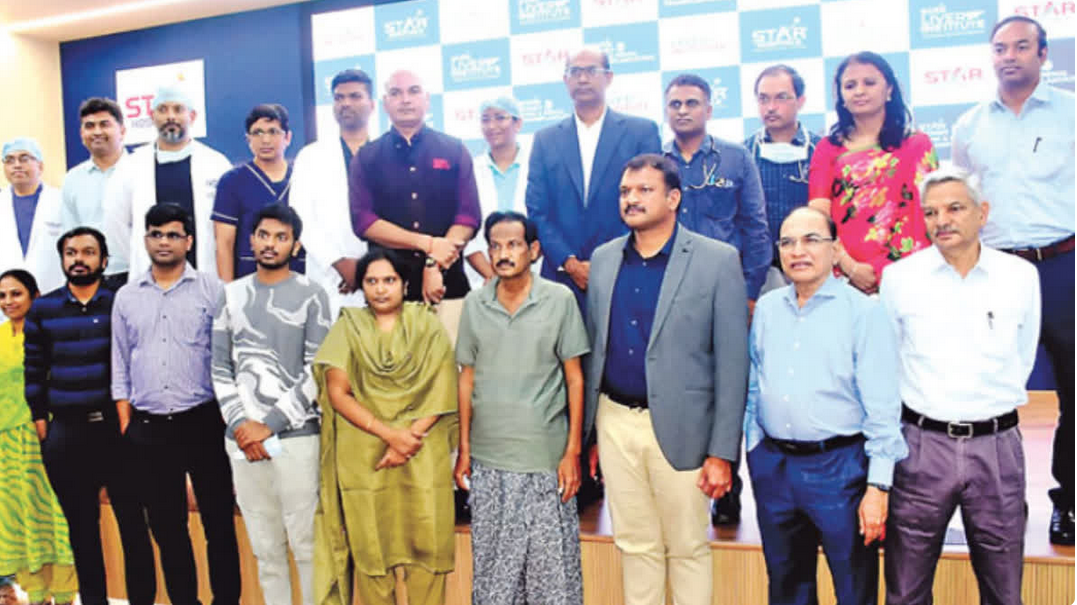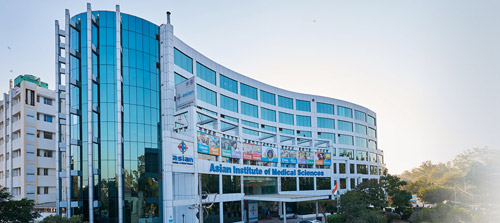Information technology has revolutionized patient care on a global scale. More and more healthcare providers are taking steps to upgrade the way in which their businesses are managed. As healthcare is moving towards digitalization, there are many challenges that IT professionals face. Medicircle has come up with a special series to delve into the challenges and opportunities faced by the IT managers of healthcare organizations.
Rathesh Nair is a Senior IT Manager at BR Life SUT Hospital, Thiruvananthapuram, Kerala. In his 17-year-old career, he has worked on various phases of Enterprise HIS Solutions, RIS/LIS Healthcare Domain, and IT Operation Management including IT infrastructure, network, DR, and data center management for some good healthcare organizations of repute.
SUT Hospital has a long-standing reputation spanning 34 years. It has created unmatched trust of its patients due to its state-of-the-art facilities and a dedicated group of specialists who provide unparalleled access to the best clinical care.
Amazing Era Demands Amazing IT Services
Rathesh points out that “earlier technology was used for activities like online shopping and personal entertainment. But in the Covid19 era, technology has provided new luxuries. Whether it is appointment fixing, billing, or discharge activity, everything requires accuracy in IT services. Patients need to be given world-class services. In our hospital, we have quickly set the pace with the changing times and have provided more than 2000 video consultations till date after the outbreak of pandemic”, says Rathesh.
Telemedicine and Video Consultation – Then and Now
Rathesh provides a comparative analysis of the pre-COVID-19 and current scenario, by mentioning, “Not many people were aware of telemedicine or video consultation earlier. However, during this pandemic, people’s attitudes have drastically changed. Now they are ready to go for video consultation and happy that they are safe this way and at least are able to connect to their doctors face to face. Though the elderly population is not tech-savvy and facing challenges to adapt to these modern means, the overall response to telemedicine and video consultation is encouraging. This is a vast shift in attitude when compared to the pre-Covid-19 times”.
IT Breakdowns at Old Hospitals with Conventional Infrastructure is Daunting
Rathesh looks back at his own experiences and emphasizes that hospitals that are digitized but very old and have conventional infrastructure make emergency situations worse compared to hospitals with newer infrastructural set-ups. Breakdowns in new infrastructures require just a remedial solution and things are up and running quickly. However, if hospitals are still running the conventional way, then setting up a modern alternative takes about 24 to 30 hours or even up to a week. This is a great testing time for IT professionals as pressure mounts up high.
Roadblocks
Rathesh lists down the following roadblocks of IT in providing seamless services:
“There are disturbances from cyber-attackers. They freeze the data which brings all activities to a standstill. So, the action plan on priority remains to prevent cyber-attacks so that there are disruption-free services in all departments of healthcare organizations. The nature of healthcare set-up is such that even a small delay would be taxing for all especially the patients. The solution lies in having own email servers instead of using third party email servers. Also, constant monitoring of emails is required by all employees in the hospital to keep a check on phishing attacks. Storage, particularly of 2D and 3D images is a challenge. If storage is on the cloud then amalgamation of artificial intelligence on data of medical devices like CT, MRI happens with precision. However, most hospitals want their own internal storage due to huge data size which requires the IT personnel to shoulder the full responsibility of its upkeep and availability to all stakeholders like doctors as soon as demanded. To make all departments of a healthcare organization IT savvy with a focus on application management is not a cakewalk. Other departments take their own pace and time to adapt to changes. They are not very fast and open to adopting changes as the IT people. Artificial Intelligence (AI) has become very diversified in the IT healthcare sector. Keeping pace with rapid advancements in AI tools requires constant learning,” says, Rathesh.
Need of Hand-in-Glove Attitude of all Departments towards Upgradation
Rathesh mentions, “IT provides the solution to doctors as well as patients. If a hospital is great in IT facilities, it's due to good team work of all departments. Things are advancing so fast that the total scenario would be far more advanced in a couple of years down the line. If all departments do not transform, IT cannot bring forward the reform. Thankfully the management of hospitals understand the significance of IT in achieving goals.”
(Edited by Amrita Priya)

 “Everyone is using social media. That is why now it is easier for them to use their mobile phones for their healthcare needs. From booking doctor’s appointments to the discharge activities; facilities are on the tip of people’s fingers and IT professionals are enablers of it,†observes Rathesh Nair, Senior IT Manager, BR Life SUT Hospital, Kerela
“Everyone is using social media. That is why now it is easier for them to use their mobile phones for their healthcare needs. From booking doctor’s appointments to the discharge activities; facilities are on the tip of people’s fingers and IT professionals are enablers of it,†observes Rathesh Nair, Senior IT Manager, BR Life SUT Hospital, Kerela









.jpeg)











.jpg)








